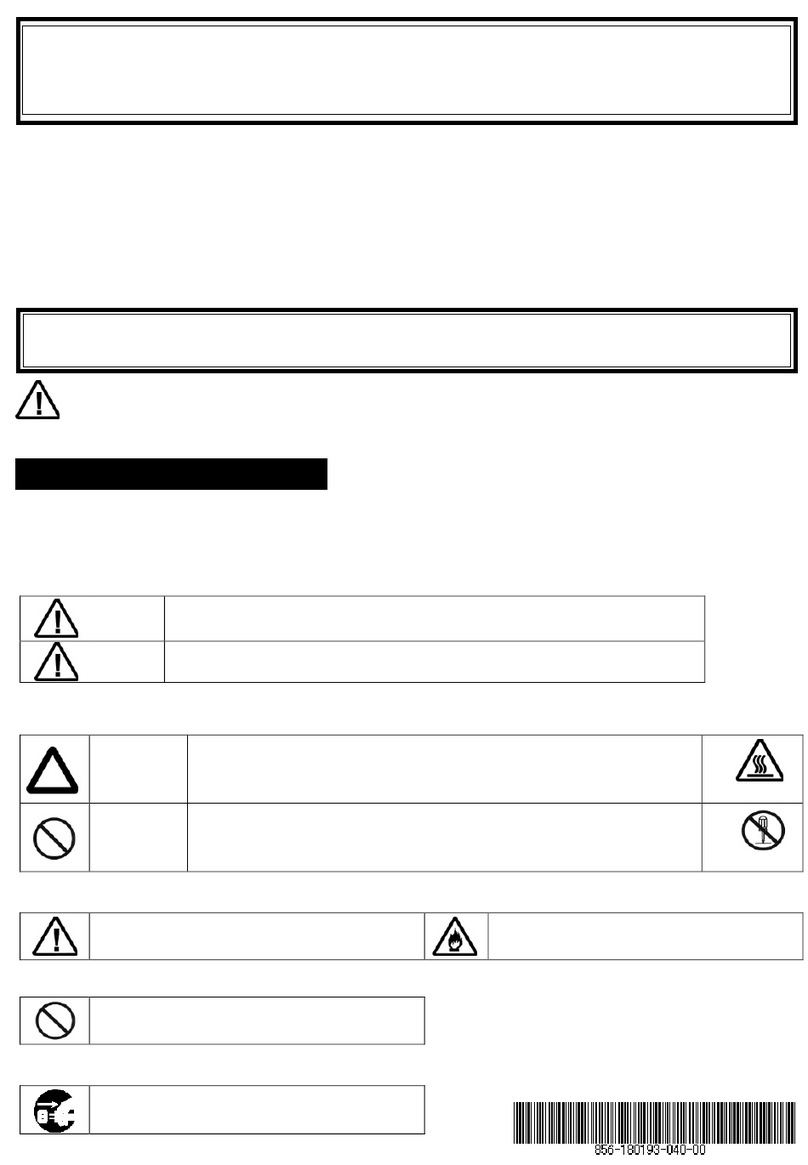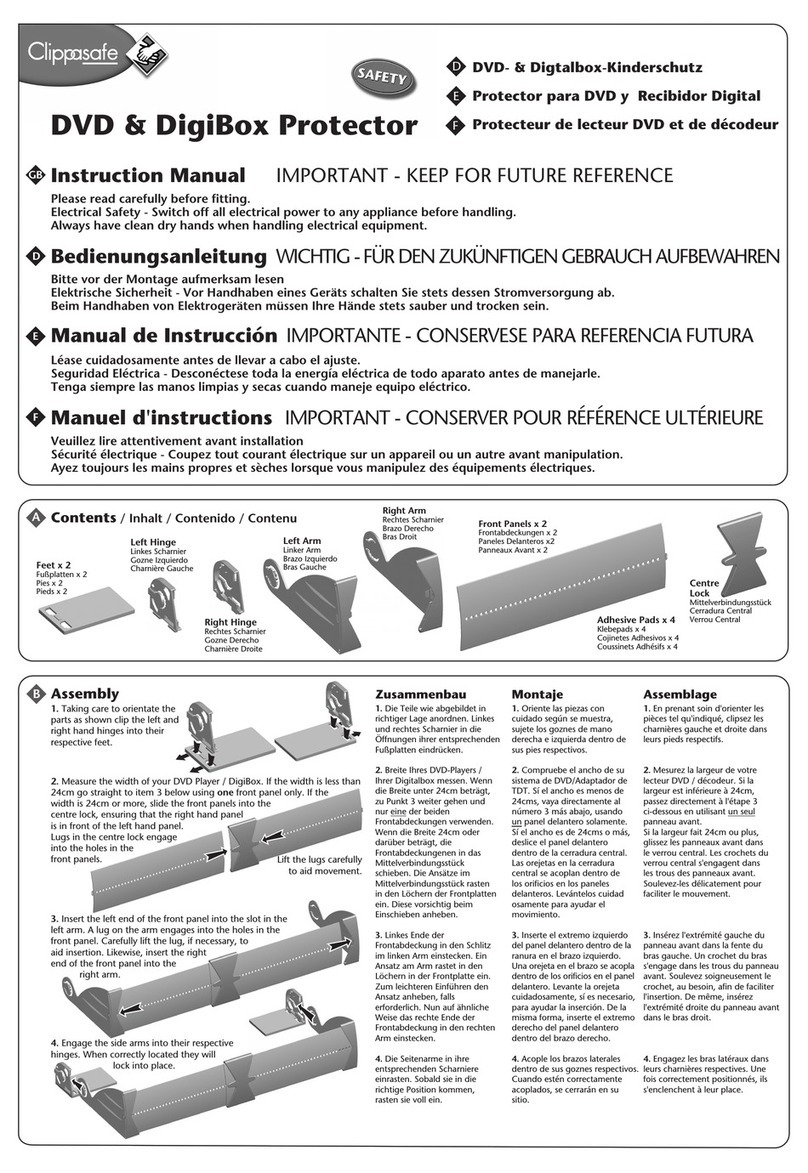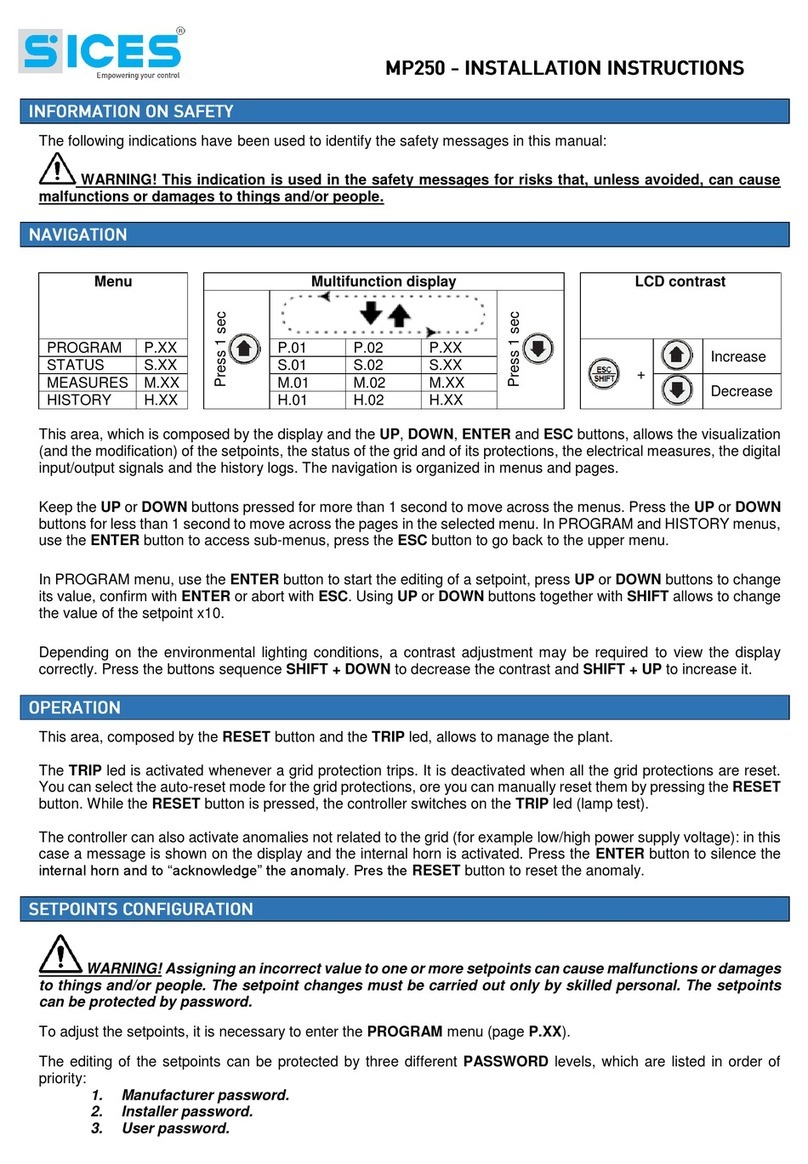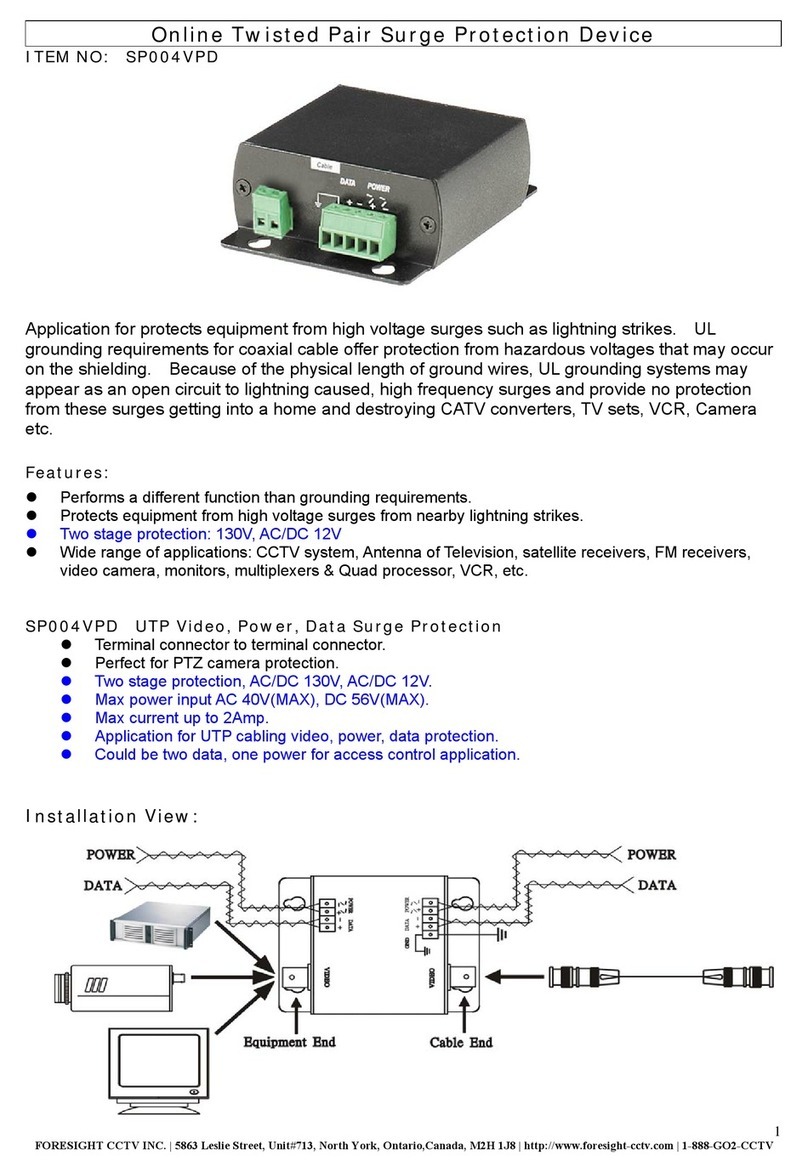MICROELETTRICA MC2-30MW User manual

MC2-30MW
Doc. N° MO-0495-ING
Copyright 2018
Date
17.03.2022
Rev.
2
Pag.
1
of
66
MICROPROCESSOR
MOTOR PROTECTION
WITH VOLTAGE AND POWER CONTROL
RELAY
TYPE
“MC2-30MW”
OPERATION MANUAL

MC2-30MW
Doc. N° MO-0495-ING
Copyright 2018
Date
17.03.2022
Rev.
2
Pag.
2
of
66
1. General Utilization and Commissioning Directions _________________________________________________________5
1.1 - Storage and Transportation _____________________________________________________________________5
1.2 - Installation __________________________________________________________________________________5
1.3 - Electrical Connection___________________________________________________________________________5
1.4 - Measuring Inputs and Power Supply _______________________________________________________________5
1.5 - Outputs Loading ______________________________________________________________________________5
1.6 - Protection Earthing ____________________________________________________________________________5
1.7 - Setting and Calibration _________________________________________________________________________5
1.8 - Safety Protection _____________________________________________________________________________5
1.9 - Handling ____________________________________________________________________________________5
1.10 - Maintenance ________________________________________________________________________________5
1.11 - Waste Disposal of Electrical & Electronic Equipment __________________________________________________5
1.12 - Fault Detection and Repair _____________________________________________________________________5
2. General _________________________________________________________________________________________6
2.1 - Power Supply ________________________________________________________________________________6
3. Front Panel ______________________________________________________________________________________6
4. Keyboard and Display ______________________________________________________________________________7
4.1 - Display _____________________________________________________________________________________7
5. Icons of Display ___________________________________________________________________________________8
6. Signalization _____________________________________________________________________________________9
6.1 - Leds Manual Reset ____________________________________________________________________________9
6.2 – Display of the last trip _________________________________________________________________________9
7. Leds Configuration________________________________________________________________________________10
7.1 - Name _____________________________________________________________________________________11
7.2 - Link enable _________________________________________________________________________________11
7.3 - Status _____________________________________________________________________________________11
7.4 - Light Prog. _________________________________________________________________________________11
7.5 - Funct. Mode ________________________________________________________________________________11
7.6 - Functions __________________________________________________________________________________11
7.7 - Table 1 ____________________________________________________________________________________12
7.8 - Example: Change settings for “Led1” _____________________________________________________________13
7.8.1 - “Link Enable” ____________________________________________________________________________13
7.8.2 - “Flashing” ______________________________________________________________________________13
7.8.3 - “Funct.Mode” ____________________________________________________________________________14
7.8.4 -“Functions” _____________________________________________________________________________14
8. User Variables ___________________________________________________________________________________15
8.1 - Name _____________________________________________________________________________________15
8.2 - User Descr. _________________________________________________________________________________15
8.3 - Linked functions _____________________________________________________________________________15
8.4 - OpLogic____________________________________________________________________________________15
8.5 - Timer _____________________________________________________________________________________15
8.6 - Timer type _________________________________________________________________________________15
8.7 – Extra _____________________________________________________________________________________15
8.8 - Logical status _______________________________________________________________________________15
8.9 - Example: Setting “User Variable” ________________________________________________________________15
8.9.1 - “User description” (User descr.) _____________________________________________________________16
8.9.2 - “Linked Functions”________________________________________________________________________16
8.9.3 - “Operation Logic” (Oplogic) _________________________________________________________________17
8.9.4 - “Timer” ________________________________________________________________________________17
8.9.5 - “Timer type” ____________________________________________________________________________18
8.9.6 - “Extra”_________________________________________________________________________________18
9. Local Commands _________________________________________________________________________________19
10. Measure_______________________________________________________________________________________20
11. Maximum Values ________________________________________________________________________________21
12. Trip Recording __________________________________________________________________________________22
13. Partial Counters _________________________________________________________________________________24
14. Total Counters __________________________________________________________________________________25
15. Events ________________________________________________________________________________________26
15.1 – Events on display ___________________________________________________________________________27
16. System (System parameters) ______________________________________________________________________28
17. Settings _______________________________________________________________________________________29
17.1 - Modifying the setting of variables _______________________________________________________________30
17.2 - Password _________________________________________________________________________________31
17.3 – Menu: Communic. (Communication) ___________________________________________________________32
17.3.1 – Description of variables___________________________________________________________________32
17.3.2 – Front Panel USB serial communication port (RS232) ____________________________________________32
17.3.3 – Cable for connection from Relay to Personal Computer __________________________________________32
17.3.4 – Main serial communication port (RS485) _____________________________________________________32
17.4 - Menu: Customize (Human Machine Interface) ____________________________________________________33
17.4.1 – Description of variables___________________________________________________________________33
17.5 - Function: FileSys (File system and Disk management) ______________________________________________34
17.5.1 - Description of variables ___________________________________________________________________34
17.5.2 – Download file information _________________________________________________________________34
17.6 - Function: T> (Thermal Image F49) _____________________________________________________________35

MC2-30MW
Doc. N° MO-0495-ING
Copyright 2018
Date
17.03.2022
Rev.
2
Pag.
3
of
66
17.6.1 - Description of variables ___________________________________________________________________35
17.6.2 - Trip and Alarm__________________________________________________________________________35
17.7 - Function: 1I> (First Overcurrent Element F50/51) _________________________________________________37
17.7.1 - Description of variables ___________________________________________________________________37
17.7.2 – Blocking Logic (BO-BI) ___________________________________________________________________38
17.7.3 - Automatic doubling of Overcurrent thresholds on current inrush ___________________________________38
17.8 – Function: 2I> (Second Overcurrent Element F50/51) _______________________________________________39
17.8.1 - Description of variables ___________________________________________________________________39
17.9 - Function: 3I> (Third Overcurrent Element F50/51) _________________________________________________39
17.9.1 - Description of variables ___________________________________________________________________39
17.10 - Function: 1Io> (First Earth Fault Element 50N/51N) _______________________________________________40
17.10.1 - Description of variables __________________________________________________________________40
17.11 - Function: 2Io> (Second Earth Fault Element 50N/51N) ____________________________________________40
17.11.1 - Description of variables __________________________________________________________________40
17.12 - Funzioni: 3Io> (Terzo elemento di guasto a terra 50N/51N) _________________________________________41
17.12.1 - Description of variables __________________________________________________________________41
17.13 - Function: 1Is> (First Negative Sequence Element F46)_____________________________________________42
17.13.1 - Description of variables __________________________________________________________________42
17.13.2 – Time/Current operation of the first Current Unbalance element “f(t)” ______________________________42
17.14 - Function:2Is> (Second Negative Sequence Element F46) ___________________________________________42
17.14.1 - Description of variables __________________________________________________________________42
17.15 - Function: 1U> (Overvoltage Element) __________________________________________________________43
17.15.1 - Description of variables __________________________________________________________________43
17.16 - Function: 1U< (Undervoltage Element) _________________________________________________________43
17.16.1 - Description of variables __________________________________________________________________43
17.17 - Function: 1f> (Overfrequency Element)_________________________________________________________43
17.17.1 - Description of variables __________________________________________________________________43
17.18 - Function: 1f< (Underfrequency Element)________________________________________________________43
17.18.1 - Description of variables __________________________________________________________________43
17.19 - Function: 1PF< (Low Power Factor Element) _____________________________________________________43
17.19.1 - Description of variables __________________________________________________________________43
17.20 - Function: MotSt (Motor Start) ________________________________________________________________44
17.20.1 - Description of variables __________________________________________________________________44
17.21 - Function: LR (Locked Rotor – Rotor jam) ________________________________________________________44
17.21.1 - Description of variables __________________________________________________________________44
17.22 - Function: StNo (Limitation Start Number) _______________________________________________________44
17.22.1 - Description of variables __________________________________________________________________44
17.23 - Function: StSeq (starting Sequence Control)_____________________________________________________45
17.23.1 - Description of variables __________________________________________________________________45
17.23.2 - Operation ____________________________________________________________________________45
17.24 - Function: I< (No load running) _______________________________________________________________45
17.24.1 - Description of variables __________________________________________________________________45
17.24.2 - Operation ____________________________________________________________________________45
17.25 - Function: TCS (Trip Circuit Supervision)_________________________________________________________46
17.25.1 - Description of variables __________________________________________________________________46
17.25.2 - Operation ____________________________________________________________________________46
17.26 - Function: IRF (Internal Relay Fault)____________________________________________________________47
17.26.1 - Description of variables __________________________________________________________________47
17.26.2 - Operation ____________________________________________________________________________47
17.27 - Function: BrkFail (Breaker Failure) ____________________________________________________________47
17.27.1 - Description of variables __________________________________________________________________47
17.27.2 - Operation ____________________________________________________________________________47
17.28 - Function: Oscillo(Oscillographic Recording) _____________________________________________________48
17.28.1 - Description of variables __________________________________________________________________48
17.28.2 - Operation ____________________________________________________________________________48
17.28.3 – Available on software ___________________________________________________________________49
17.28.4 – Setting “User Trigger Oscillo” _____________________________________________________________50
17.28.5 – Example: Setting “Oscillo Trigger Logic” _____________________________________________________51
17.29 - Function: CB Mngn (Control C/B) _____________________________________________________________54
17.29.1 - Description of variables __________________________________________________________________54
17.29.2 – Push-Buttons (Programmable only via software) ______________________________________________54
17.30 - Function: ExtResCfg (External Reset Configuration) _______________________________________________56
17.30.1 - Description of variables __________________________________________________________________56
18. Input – Output (via software)______________________________________________________________________56
18.1 – Digital Input _______________________________________________________________________________56
18.2 – “DI” Configuration (via software) _______________________________________________________________56
18.2.1 – Example ______________________________________________________________________________57
18.3 – Physical Outputs____________________________________________________________________________58
18.4 - “DO” Configuration __________________________________________________________________________58
18.4.1 - Example configuration ____________________________________________________________________58
18.4.2 - Functions - Operation Mode________________________________________________________________59
19. InfoStatus _____________________________________________________________________________________61
20. Date and Time __________________________________________________________________________________62
20.1- Clock synchronization ______________________________________________________________________63
21. Healthy (Diagnostic Information) ___________________________________________________________________64

MC2-30MW
Doc. N° MO-0495-ING
Copyright 2018
Date
17.03.2022
Rev.
2
Pag.
4
of
66
22. Dev.Info (Relay Version) __________________________________________________________________________64
23. Maintenance ___________________________________________________________________________________64
24. Wiring Diagram _________________________________________________________________________________65
25. Overall Dimensions ______________________________________________________________________________65
26. Electrical Characteristics __________________________________________________________________________66

MC2-30MW
Doc. N° MO-0495-ING
Copyright 2018
Date
17.03.2022
Rev.
2
Pag.
5
of
66
1. General Utilization and Commissioning Directions
Always make reference to the specific description of the product and to the Manufacturer's instruction.
Carefully observe the following warnings.
1.1 - Storage and Transportation
Must comply with the environmental conditions stated in the product's specification or by the applicable IEC
standards.
1.2 - Installation
Must be properly made and in compliance with the operational ambient conditions stated by the Manufacturer.
1.3 - Electrical Connection
Must be made strictly according to the wiring diagram supplied with the Product, to its electrical
characteristics and in compliance with the applicable standards particularly with reference to human safety.
1.4 - Measuring Inputs and Power Supply
Carefully check that the value of input quantities and power supply voltage are proper and within the
permissible variation limits.
1.5 - Outputs Loading
Must be compatible with their declared performance.
1.6 - Protection Earthing
When earthing is required, carefully check its effectiveness.
1.7 - Setting and Calibration
Carefully check the proper setting of the different functions according to the configuration of the protected
system, the safety regulations and the co-ordination with other equipment.
1.8 - Safety Protection
Carefully check that all safety means are correctly mounted, apply proper seals where required and
periodically check their integrity.
1.9 - Handling
Notwithstanding the highest practicable protection means used in designing electronic circuits, the electronic
components and semiconductor devices mounted on the modules can be seriously damaged by electrostatic
voltage discharge which can be experienced when handling the modules.
The damage caused by electrostatic discharge may not be immediately apparent but the design reliability and
the long life of the product will have been reduced. The electronic circuits are completely safe from
electrostatic discharge (8 KV IEC 255.22.2) when housed in their case; withdrawing the modules without
proper cautions expose them to the risk of damage.
1.10 - Maintenance
Make reference to the instruction manual of the Manufacturer; maintenance must be carried-out by specially
trained people and in strict conformity with the safety regulations.
1.11 - Waste Disposal of Electrical & Electronic Equipment
(Applicable throughout the European Union and other European countries with separate collection program).
This product should not be treated as household waste when you wish dispose of it. Instead, it should be
handed over to an applicable collection point for the recycling of electrical and electronic equipment.
By ensuring this product is disposed of correctly, you will help prevent potential negative consequence to the
environment and human health, which could otherwise be caused by inappropriate disposal of this product.
The recycling of materials will help to conserve natural resource.
1.12 - Fault Detection and Repair
Internal calibrations and components should not be altered or replaced.
For repair please ask the Manufacturer or its authorized Dealers.
Misapplication of the above warnings and instruction relieves the Manufacturer of any liability.

MC2-30MW
Doc. N° MO-0495-ING
Copyright 2018
Date
17.03.2022
Rev.
2
Pag.
6
of
66
2. General
The main features of the relays are:
User friendly front face with hi-resolution graphic display (240x128), 10 programmable signal Leds, 6 push-
buttons (configurable) and four push-button for complete local managemen, USB for local communication.
Eight user programmable Output Relays.
Eight opto-isolated, self powered Digital Inputs.
Additional RS485 communication port
Input currents are supplied to 3 current transformers: measuring phase currents.
An additional internal CT directly measures the residual (Zero Sequence) current of the three inputs.
Current inputs can be 1 or 5A: selection between 1A or 5A is made by movable jumpers provided inside the
Relay.
2.1 - Power Supply
The relay can be fitted with two different types of power supply:
Type 1
24V(-20%) / 110V(+15%) a.c.
24V(-20%) / 125V(+20%) d.c.
Type 2
80V(-20%) / 220V(+15%) a.c.
90V(-20%) / 250V(+20%) d.c.
Before energizing the unit check that supply voltage is within the allowed limits.
3. Front Panel

MC2-30MW
Doc. N° MO-0495-ING
Copyright 2018
Date
17.03.2022
Rev.
2
Pag.
7
of
66
4. Keyboard and Display
Pushbuttons Programmable
↓
Navigation
menu
By these buttons the options showed in
correspondence on the display are selected.
Increase These buttons are used to scroll the items of
the different menus (Local Control,
Measurements, Energy metering etc).
Decrease
4.1 - Display
The 240x128 pixel hi-resolution LCD display the available information (menu, etc.).

MC2-30MW
Doc. N° MO-0495-ING
Copyright 2018
Date
17.03.2022
Rev.
2
Pag.
8
of
66
5. Icons of Display
LocalCmd Local Commands
Measure Actual Measurements
MaxVal Maximum Values
TripRec. Trip Recording
Counter Partial Counters (Resettable Counter)
ROCnt Total Counter (Read Only Counter)
Events Event Recording
Setting Function Settings
System System Settings
InfoStatus Information Status
TimeDate Time And Date
Healthy Diagnostic Information
Dev.Info Relay Version

MC2-30MW
Doc. N° MO-0495-ING
Copyright 2018
Date
17.03.2022
Rev.
2
Pag.
9
of
66
6. Signalization
Eleven signal leds are provided:
1
Led Power Supply
Not programmable
Green
10
Leds
Programmable (via software)
N°
Colours
1
Green
2
Green
3
Green
4
Yellow
5
Red
6
Red
7
Red
8
Yellow
9
Red
10
Green
In case of auxiliary power supply failure the status of the leds is recorded and reproduced when power supply is
restored.
6.1 - Leds Manual Reset
For Leds manual reset operate as follows:
1
•
Press “Menu” for
access to the main
menu with icons.
3
•
Select
“LedClear”
•
Press “Select” to
execute the
command.
2
•
Select icon
“LocalCmd”.
4
•
When command has
been executed the
display shows
“Command Done”;
•
Press “Select”,
6.2 – Display of the last trip
Beside the signalization of the led “Trip”, indicating a generic function trip, the display shows a window
indicating the last function that was tripped and the number of events that are stored in the memory.
The display will show this window until the reset button or external reset are operated.
1
•
Press “Menu” to access to the main menu with icons.
Press “Home” to erase trip visualization.
Ex. “tTCS” (flashing) is the last trip.

MC2-30MW
Doc. N° MO-0495-ING
Copyright 2018
Date
17.03.2022
Rev.
2
Pag.
10
of
66
7. Leds Configuration
The relay manage up to 10 signal leds (Programmable), 1 led “Power” (green).
For Leds programming (only via software) operate as follows:
- Open the software program and connect to the relay.
- Select “Change Windows” from “Menu” button (options)
- Select “Led Setting”

MC2-30MW
Doc. N° MO-0495-ING
Copyright 2018
Date
17.03.2022
Rev.
2
Pag.
11
of
66
The window for leds configuration will show:
7.1 - Name
Led name – for leds position see picture
7.2 - Link enable
Linked
=
Enable to operate
Not Linked
=
Disable
7.3 - Status
7.4 - Light Prog.
Light-on
=
When cause appear led is illuminated
Flashing
=
When cause appear led is flashing
7.5 - Funct. Mode
Volatile
=
When cause disappear led turn-off (Not memorized)
Latched
=
When cause disappear led remain illuminated (memorized)
7.6 - Functions
Select the function assigned to specific led (see table 1).
It’s possible to configure only one function for each led.
For configuration multiple functions use “UserVar” function.
Light-off
=
Normal condition
Light-on
=
When cause appear led is illuminated
See “Light Prog”
Flashing
=
When cause appear led is flashing

MC2-30MW
Doc. N° MO-0495-ING
Copyright 2018
Date
17.03.2022
Rev.
2
Pag.
12
of
66
7.7 - Table 1
Tal
Alarm
Thermal Image T>
T>
Trip
1I>
Start
First overcurrent element
t1I>
Trip
2I>
Start
Second overcurrent element
t2I>
Trip
3I>
Start
Third overcurrent element
t3I>
Trip
1Io>
Start
First earth fault element
t1Io>
Trip
2Io>
Start
Second earth fault element
t2Io>
Trip
3Io>
Start
Third earth fault element
t3Io>
Trip
1Is>
Start
First negative sequence current element
t1Is>
Trip
2Is>
Start
Second negative sequence current element
t2Is>
Trip
1U>
Start
Overvoltage element
t1U>
Trip
1U<
Start
Undervoltage element
t1U<
Trip
1f>
Start
Overfrequency element
t1f>
Trip
1f<
Start
Underfrequency element
t1f<
Trip
1PF<
Start
Low Power Factor
t1PF<
Trip
I<
Start
No Load Running element
tI<
Trip
ILR
Start
Locked Rotor element
tILR
Trip
IRF
Start
Internal Relay Failure
tIRF
Trip
BF
Trip
BF (Breaker Failure)
tTCS
Trip coil supervision
MotOn
Motor Start
LimStNum
Limitation Startings Number
StSeqSucc
Start Sequence
Itr
Switch-over current
DskClean
Disk near Full clean operation is required
DskFull
Disk Full Write should be lock
DskWR
Disk write in progress
DskFRMT
Disk Format in progress
DskCHK
Check disk in progress
rDskAttach
Not Used
Removable disk usb attach
rDskDetach
Removable disk usb detach
rDskDtchable
Removable disk usb now detachable
rDskClean
Removable disk usb near to full clean operation is required
rDskFull
Removable disk usb full, write locked
rDskWR
Removable disk usb write in progress
rDskFRMT
Removable disk usb format in progress
rDskCHK
Removable disk usb check in progress
manOpCmd
Manual Open Command
L/Rdisc
Local/Remote signal Discrepancy
CL-Cmd
Close Command
C/Bfail
Circuit Breaker failure
UserTriggerOscillo
User Variable for Oscillographic Recording
UserVar<0>
User Variable
to
UserVar<24>
Vcc
Reserved
Gnd
Reserved
Reset
Reset signal logic
P1
Push-button 1
P2
Push-button 2
P3
Push-button 3
P4
Push-button 4
P5
Push-button 5
P6
Push-button 6
Gen.Start
Start
Generic
Gen.Trip
Trip
0.D1
Digital Inputs
0.D1Not
to
0.D8
0.D8Not
0.R1
Output relays
to
0.R8

MC2-30MW
Doc. N° MO-0495-ING
Copyright 2018
Date
17.03.2022
Rev.
2
Pag.
13
of
66
7.8 - Example: Change settings for “Led1”
Change settings for “Led1” : “Enable”, “Flashing”, “Latched”, “1I>”.
Main Windows:
7.8.1 - “Link Enable”
Select “Link enable” related to “Led 1” and press right button on mouse, select
“Value change”:
Select “Linked” and press “OK” (if Password is
request, see § Password):
7.8.2 - “Flashing”
Select “Light prog” related to Led 1 and press right button on mouse, select “Value
change”:
Select “Flashing” and press “OK” (if Password is
request, see § Password):

MC2-30MW
Doc. N° MO-0495-ING
Copyright 2018
Date
17.03.2022
Rev.
2
Pag.
14
of
66
7.8.3 - “Funct.Mode”
Select “Funct.Mode” related to Led 1 and press right button on mouse, select
“Value change”:
Select “Latched” and press “OK”
(if Password is request, see § Password):
7.8.4 -“Functions”
Select “Functions” related to Led 1 and press right button on mouse,
select “Value change”:
Select “1I>” and press “OK”
(if Password is request, see § Password):

MC2-30MW
Doc. N° MO-0495-ING
Copyright 2018
Date
17.03.2022
Rev.
2
Pag.
15
of
66
8. User Variables
The “User Variable” is a result of a logical operation (Or, AND, ecc...), it can be used like other logical output.
This operation is possible only via software.
8.1 - Name
Internal progressive name
8.2 - User Descr.
Custom identification label for user variable
8.3 - Linked functions
Selection functions
8.4 - OpLogic
Operation Logic
=
[None, OR, AND, XOR, NOR, NAND, NOT, Ff-SR, Counter, Rise-UP, Fall-Down]
8.5 - Timer
Time delay (0-600)s, step 0.01s
8.6 - Timer type
Delay
=
Add a delay on output activation. The “Timer” is edge triggered on rise edge.
Monostable P
=
Activated the output for the time “Timer”
Monostable N
=
Disactivated the output for the time "Timer".
Blinking
=
The output switches periodically at the frequency defined by "Timer".
Delay-Fall-Down
=
Delay-Fall-Down
8.7 – Extra
Extra Time (0 - 65000)s, step 1s
8.8 - Logical status
“User Variable” Logical status
8.9 - Example: Setting “User Variable”
Open software program and connect to the relay.
Select “Change Windows” from “Menu” button
Select “User Variable”
Setting for “UserVar<0>” : “Current Trip”, “1I>,2I>,3I>”, “OR”, “1”, “Monostable P”, “10”.

MC2-30MW
Doc. N° MO-0495-ING
Copyright 2018
Date
17.03.2022
Rev.
2
Pag.
16
of
66
8.9.1 - “User description” (User descr.)
Select “User descr” related to “UserVar<0>” and press right button on mouse,
select “Value change”:
Insert “Current Trip” into box and press
“OK”:
8.9.2 - “Linked Functions”
Select “Linked Functions” related to “UserVar<0>” and press right button on
mouse, select “Value change”:
Select “1I>, 2I>, 3I>” from “Available” box via push-button “<Add”, and press “OK”.
For remove functions, use push-button “>Remove”.

MC2-30MW
Doc. N° MO-0495-ING
Copyright 2018
Date
17.03.2022
Rev.
2
Pag.
17
of
66
8.9.3 - “Operation Logic” (Oplogic)
Select “Oper Logic” related to “UserVar<0>” and press right button on mouse,
select “Value change”:
Insert “OR” into box and press “OK”:
8.9.4 - “Timer”
Select “Timer” related to “UserVar<0>” and press right button on mouse, select
“Value change”:
Select “1” into box and press “OK”:

MC2-30MW
Doc. N° MO-0495-ING
Copyright 2018
Date
17.03.2022
Rev.
2
Pag.
18
of
66
8.9.5 - “Timer type”
Select “Timer” related to “UserVar<0>” and press right button on mouse, select
“Value change”:
Select “Monostable P” into box and
press “OK”:
8.9.6 - “Extra”
Select “Extra” related to “UserVar<0>” and press right button on mouse,
Select “10” into box and press “OK”:

MC2-30MW
Doc. N° MO-0495-ING
Copyright 2018
Date
17.03.2022
Rev.
2
Pag.
19
of
66
9. Local Commands
“Local Commands” allow to operate from relay front face controls like Thermal Memory reset, Leds reset, etc.
Menu
Description
Password
Led
Clear
Reset of signal Leds
No
Relays
Clear
Manual reset of output relays
No
main C/B
Cl.
Manual C/B closing (conditioned by Password)
Yes
main C/B
Op.
Manual C/B opening (conditioned by Password)
Yes
Event
Clear
Reset Events
Yes
LTrip
Clear
Reset Last Trip
Yes
Counter
Clear
Reset Counters
Yes
HistFail
Clear
Reset of Internal Failure Historic records
Yes
Reset
StNo
Reset of the Starts Number
Yes
Reset
Term
Reset to zero of the accumulations relevant to Thermal Image and
Interruption Energy (only if T> is enable)
Yes
Leds
Test
Signal Leds test
No
Force
Osc
Force Oscillo Recording
Yes
Format
iDisk
Format internal disk
Yes
Check
iDisk
Check internal disk
Yes
To operate one command by the Front Face Keyboard, proceed as follows (Led Clear in the present example).
1
•Press “Menu” for access to the main menu with icons.
2
•Select “LocalCmd” icon with pushbutton “Increase” or “Decrease”.
•Press “Select” for access.
3
•Select with pushbutton “Increase” or “Decrease” the menu “LedClear”.
•Press “Select” to execute the command.
(if Password is request, see § Password).
4
•When command has been executed the display shows
“Command Done”; go to “3”.

MC2-30MW
Doc. N° MO-0495-ING
Copyright 2018
Date
17.03.2022
Rev.
2
Pag.
20
of
66
10. Measure
Real time values as measured during the normal operation.
1
•Press “Menu” for access to the main menu with icons.
2
•Select “Measure” icon with pushbutton “Increase” or “Decrease”.
•Press “Select” for access.
3
•Scroll the menu “Measure”with pushbutton “Increase” or
“Decrease” to display
the measurement.
•Press “Exit” to go to the main menu.
Imx
(0 ÷99999)
A
Largest of the 3 phase-currents (Ia,Ib,Ic)
Ia
(0 ÷99999)
A
RMS value phase A current
Ib
(0 ÷99999)
A
RMS value phase B current
Ic
(0 ÷99999)
A
RMS value phase C current
Io
(0 ÷99999)
A
RMS value of Zero Sequence current (RMS Secondary Amps)
I1
(0 ÷99999)
In
Positive Sequence current
I2
(0 ÷99999)
In
Negative Sequence current
Frq
(40 ÷70)
Hz
Frequency
Tem
(0 ÷99999)
%T
Thermal status as % of the full load continuous operation temperature Tn
Uab
(0 ÷99999)
V
Phase-to-Phase Voltage A-B
W
(0 ÷99999)
k
Three phase active power
VAr
(0 ÷99999)
k
Three phase reactive power
VA
(0 ÷99999)
k
Three phase apparent power
Cos
(-1 ÷1)
Power Factor
tst
(0 ÷99999)
s
Motor starting time
Ist
(0 ÷99999)
A
Max current during motor starting
Table of contents
Popular Protection Device manuals by other brands
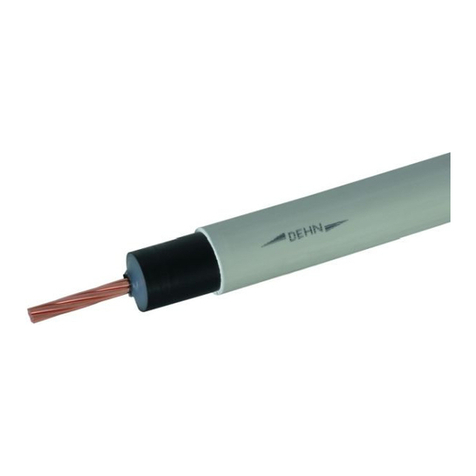
dehn
dehn HVI power installation instructions

dehn
dehn HVI power long installation instructions
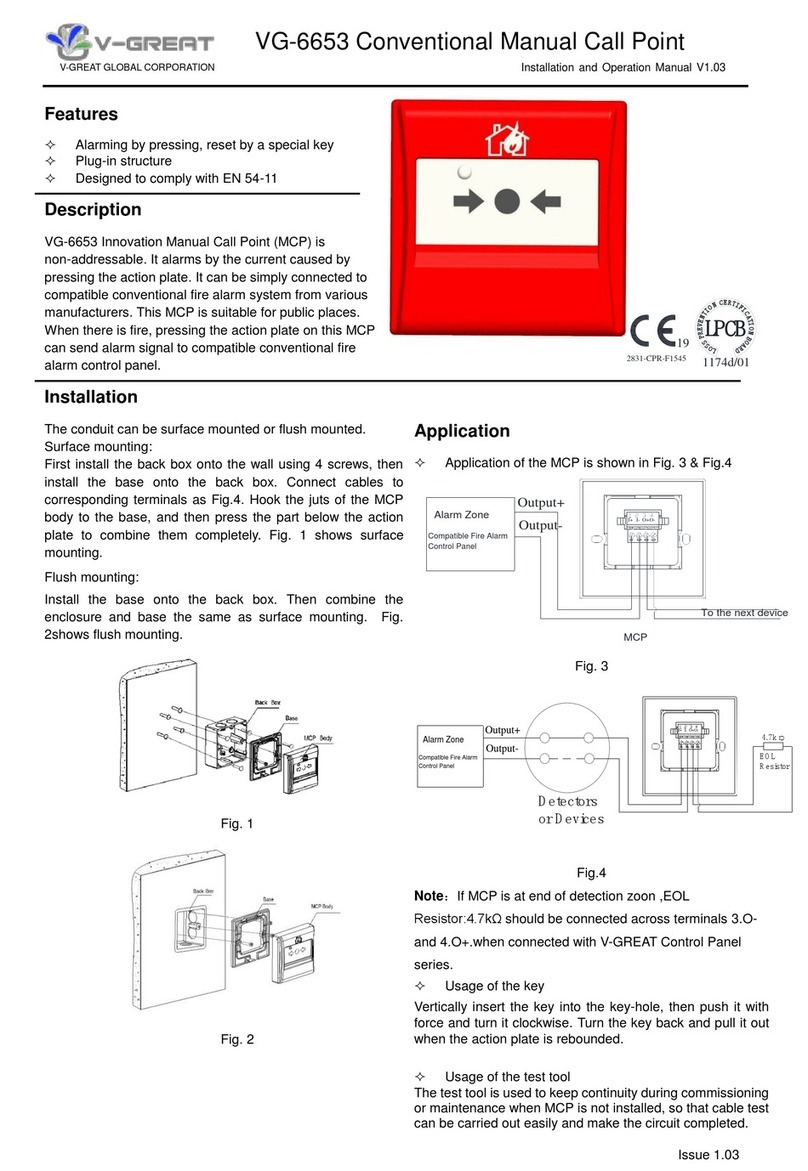
V-GREAT
V-GREAT VG-6653 quick start guide
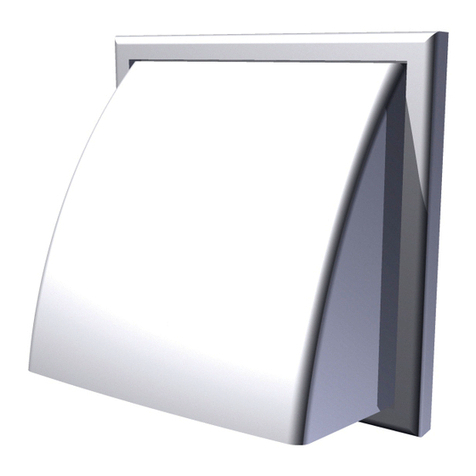
Aspira
Aspira GPA 150 installation manual

MILZ PRODUKTE
MILZ PRODUKTE RING Fitting instructions

Task Force Tips
Task Force Tips CrewProtect 20 Instructions for installation, operation and maintenance

SILENTex
SILENTex Natural User instructions
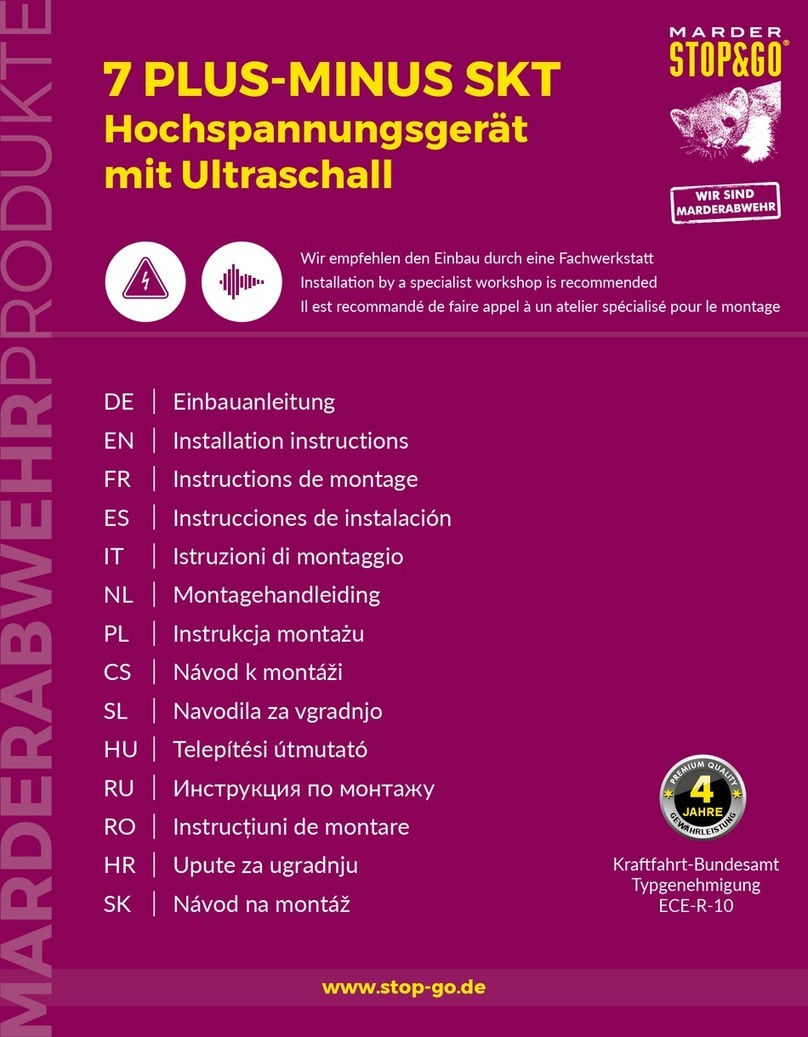
Stop & Go
Stop & Go 7 PLUS-MINUS SKT installation instructions
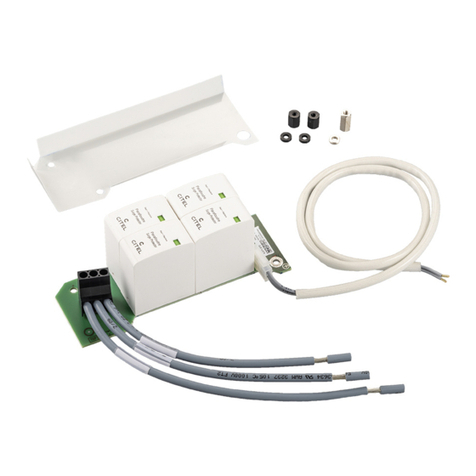
FRONIUS
FRONIUS DC SPD quick start guide
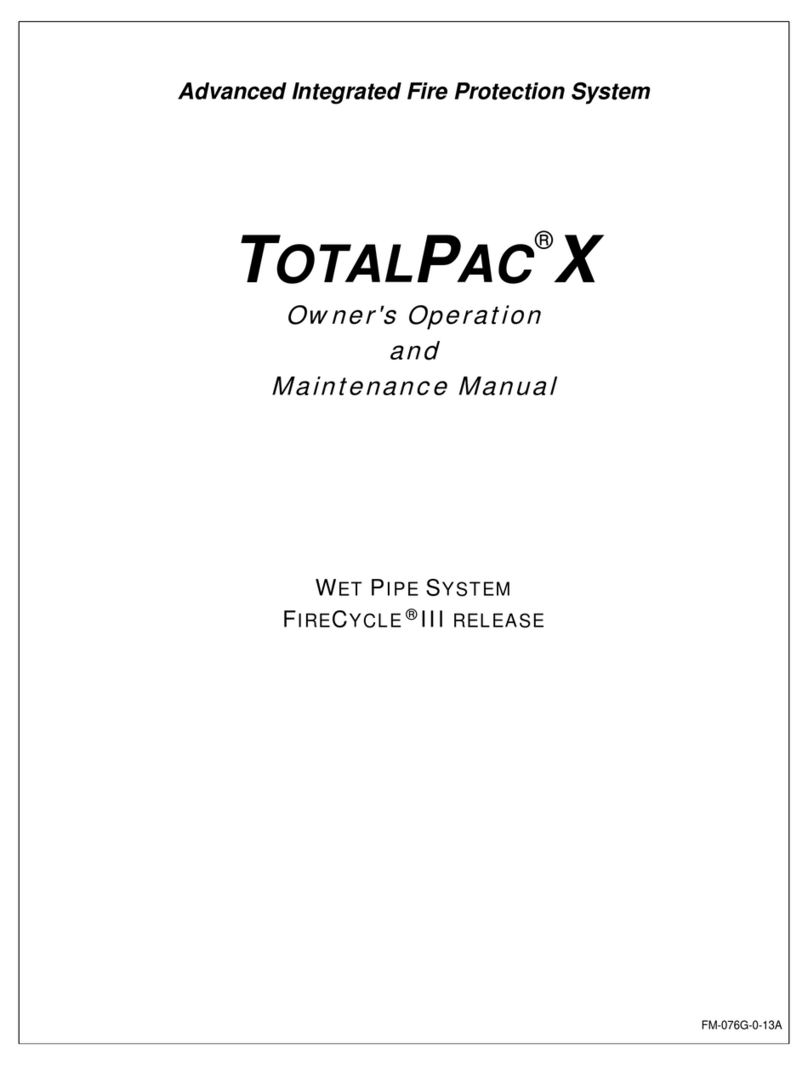
FireFlex
FireFlex TOTALPAC X Owner's operation and maintenance manual
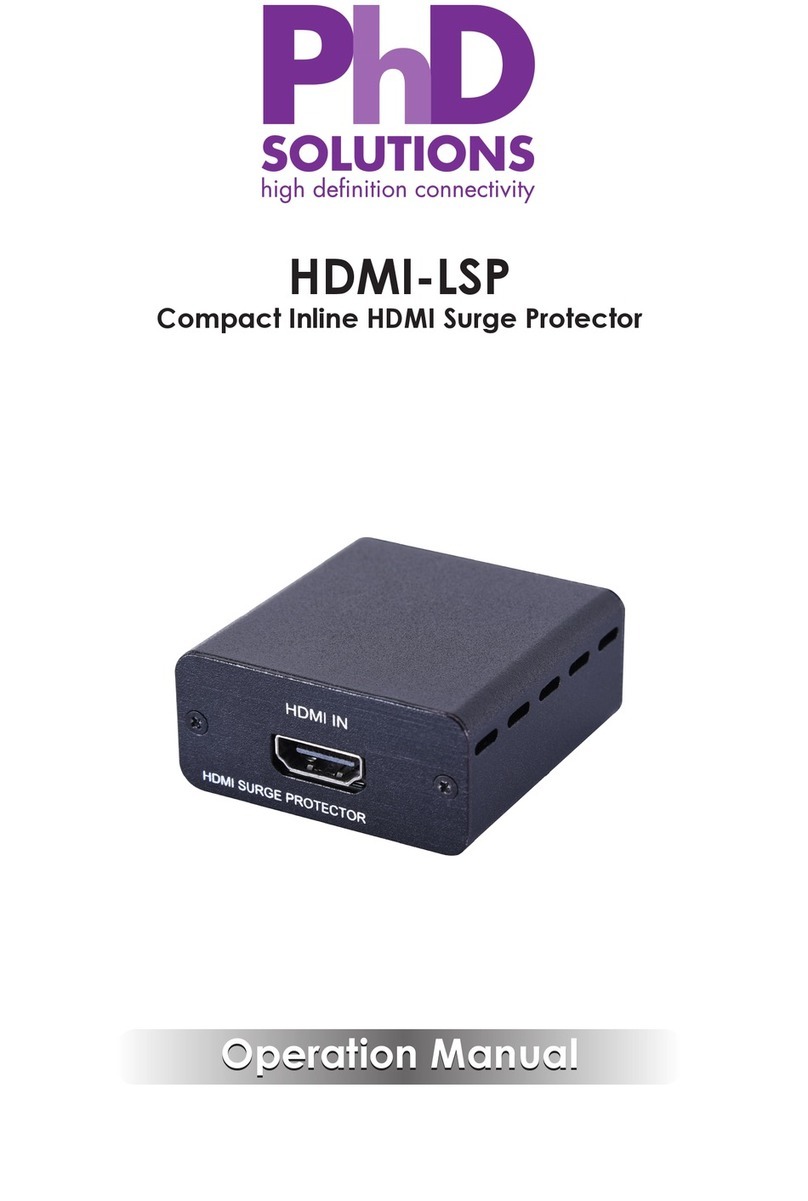
PhDsolutions
PhDsolutions HDMI-LSP Operation manuals

HIK VISION
HIK VISION DS-KABD8003-RS1/S manual

